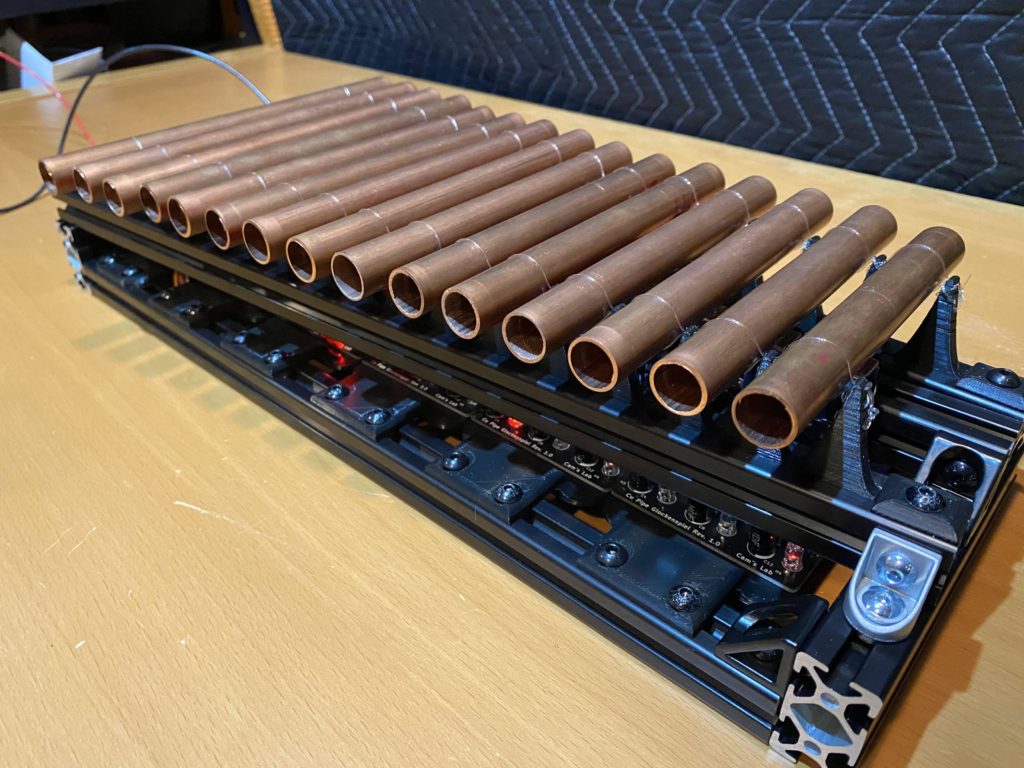
A glockenspiel is a pretty ordinary instrument with a very silly name. Many Westerners will immediately notice the similarities between glockenspiels and xylophones, but there are slight differences in pitch and range. Both are played with mallets and so anyone can hammer out some notes. But playing well is much more difficult, which is why CamsLab built this auto-glockenspiel that plays itself.
CamsLab chose the glockenspiel over other instruments because they wanted an excuse to experiment with solenoids. Compared to string, brass, and wind instruments, a percussion instrument like a glockenspiel is very easy to play by electromechanical means. Each bar is a copper pipe of a specific length calibrated to produce a desired note. Every one of those bars has its own solenoid, which strikes the copper on demand.
An Arduino Mega 2560 board controls those solenoids through FETs (field-effect transistors). Those are necessary because the solenoids each require about 1A of current, which is more than the Arduino can supply through a pin. CamsLab also implemented flyback diodes to prevent damage, since solenoids are inductive loads. Those components and the copper bars mount onto a simple frame made of aluminum extrusion.
CamsLab programmed each note in sequence within the sketch, which is cumbersome. A good alternative would be MIDI control. But even as it is, the auto-glockenspiel sounds great.
The post A glockenspiel that plays itself appeared first on Arduino Blog.
Website: LINK


